|
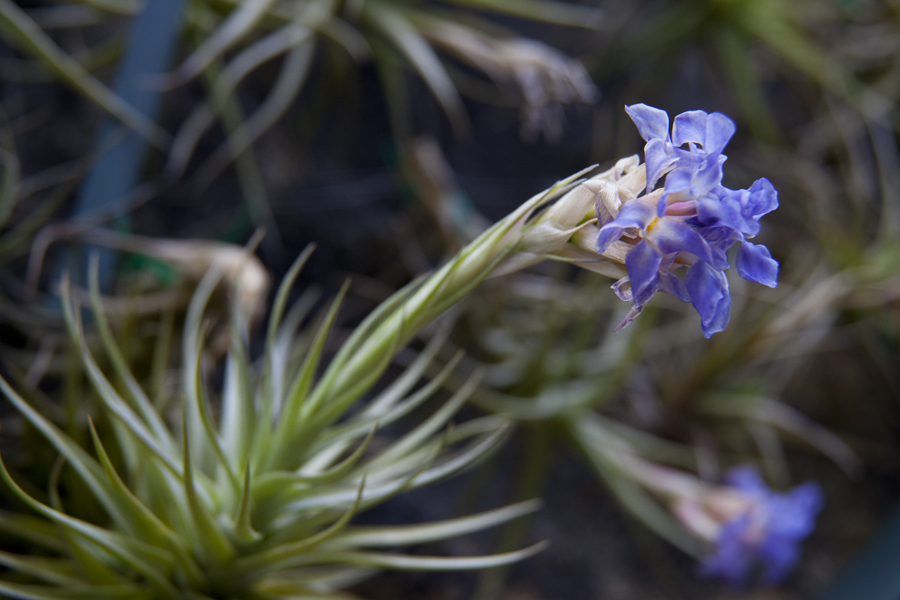
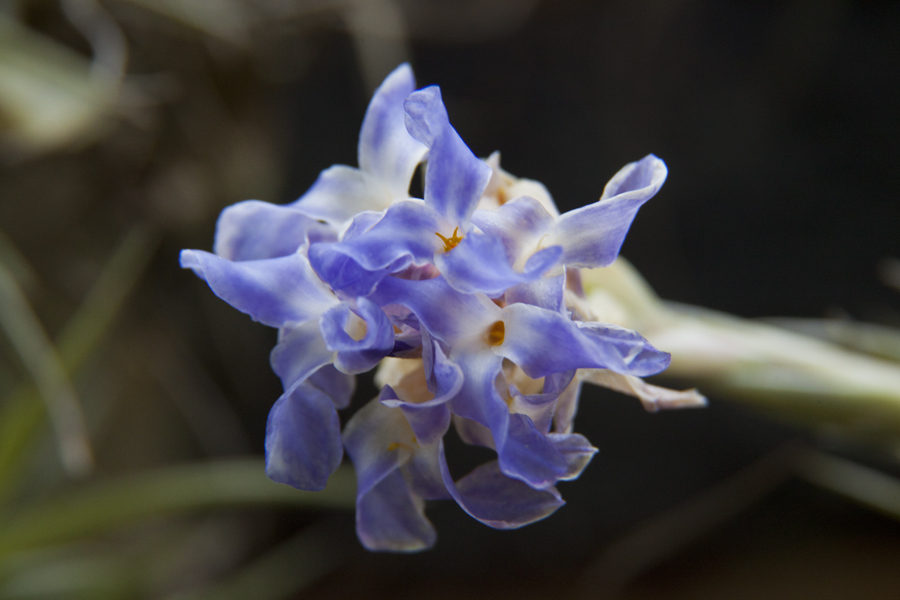
Tillandsia bergeri flower with stem
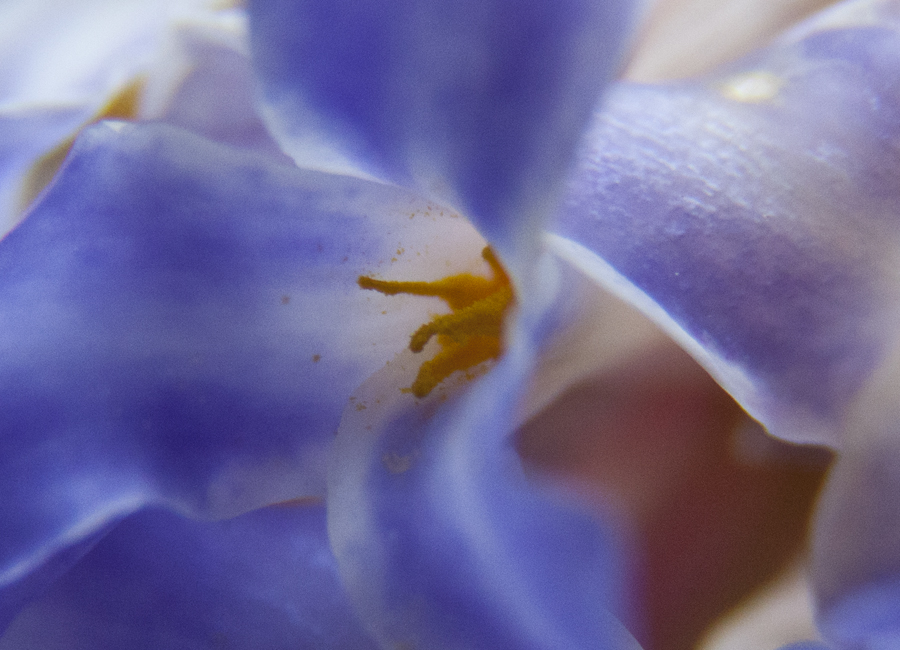
Detail showing a Tillandsia bergeri flower with anther and fine yellow pollen

Tillandsia bergeri used in a suspended plant work at the Baldessin Press

The spiral above in flower
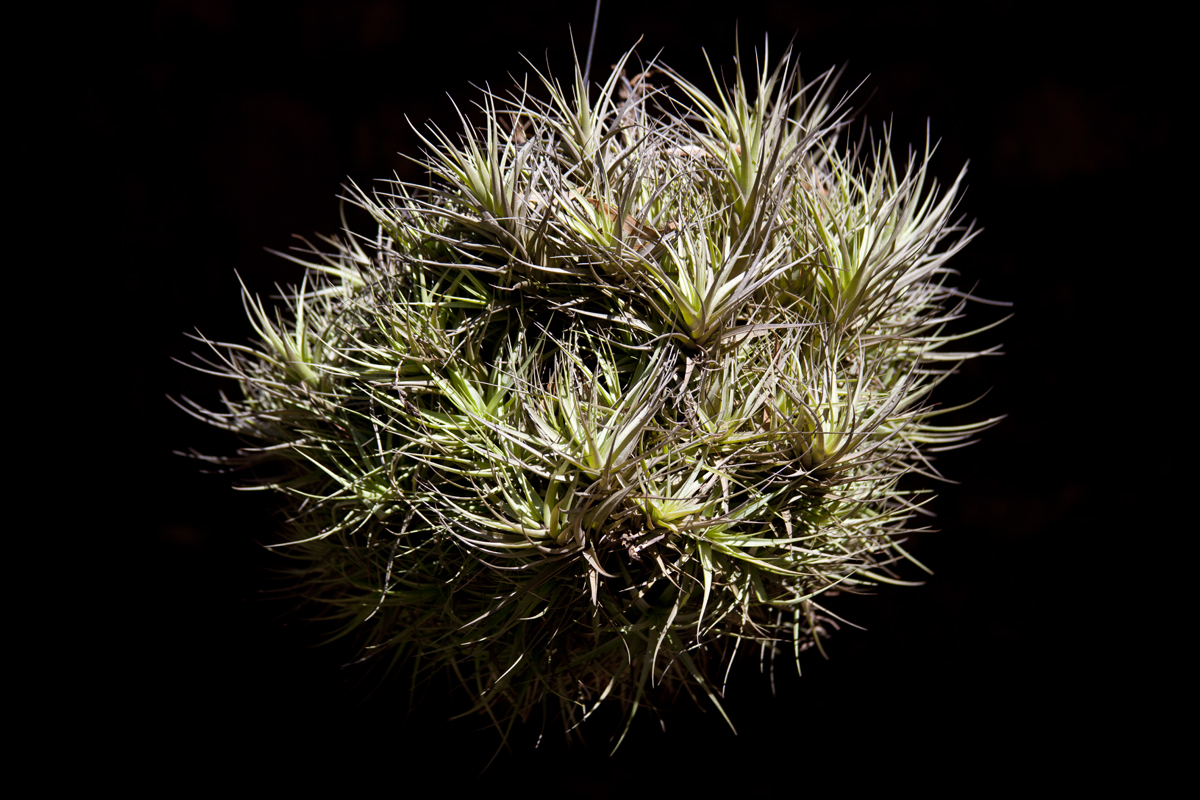
Large clump of Tillandsia bergeri
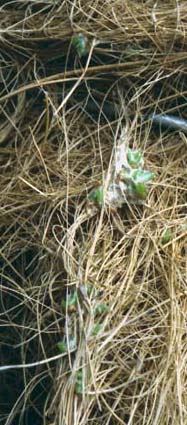
Small Tillandsia bergeri seedlings germinated on Coconut fibre
|
Family: Bromeliad
Sub-Family: Tillandsioideae:
Genus: Tillandsia
Sub-genus: Anoplophytum
Native distribution: Tillandsia Bergeri is endemic to an isolated mountain range south of Buenos Aires where it grows on remote steep rocks in full sun and dry conditions.
Habit: It is a small, compact rosette of stiff, gray leaves similar in habit to T. aeranthos. The plant quickly forms large, almost dense clusters, but the stem becomes elongated, with the new growth coming from the end of the old plant. The stiff leaves have a pronounced fluting that runs the length to the pointed tip and tend to grow in a spiral formation one on top of the other. Because this provides a constantly curved surface there is no single area of the leaf that is exposed to the sun for a long period of time. This acts as a strategy to break up harsh sunlight and create shadow allowing the plant to withstand hot dry conditions while being exposed to full sun.
Foliage:
Flowers: At flowering, the bracts are pale pink; the flowers, at the end of the long stem, have violet petals. The flowers are open, they have confined stamens, and the petals are keeled. The plant flowers Oct - Nov and the seed is ripe with the capsules opening in mid February.
Seed:
Pups:
Cultivation: The plants at St Andrews have withstood temperatures up to 46.7° C - it can also withstand cold conditions, ( in fact needs a certain level of cold to stimulate flowering) frost, hail, snow and to a certain degree salt winds
Fertilization: A mist every week with Epiphyites Delight or Epsom salts during the growing season will help the plant.
( Epiphyte’s Delight fertilizer was developed for a special reason. Nitrogen promotes foliar growth. If you have Tillandsias, Orchids, or other epiphytes and you feed them, take a look at the nitrogen content. If it’s high in urea, the plants can’t use it because the urea needs a bacteria in soil to break it down into ammonia and nitrates. Since the epiphytes don’t have any soil they can’t break down the urea. It was for this reason that we had Epiphyte’s Delight formulated. It contains only ammoniacal and nitrate nitrogen which is immediately accessible and usable by the plants.)
Availability:
.
|